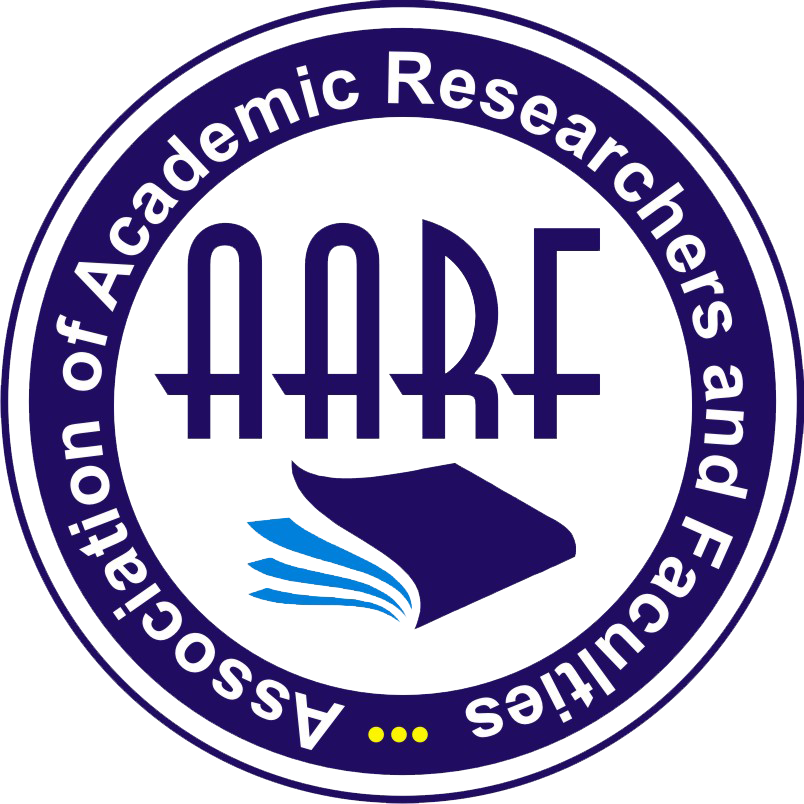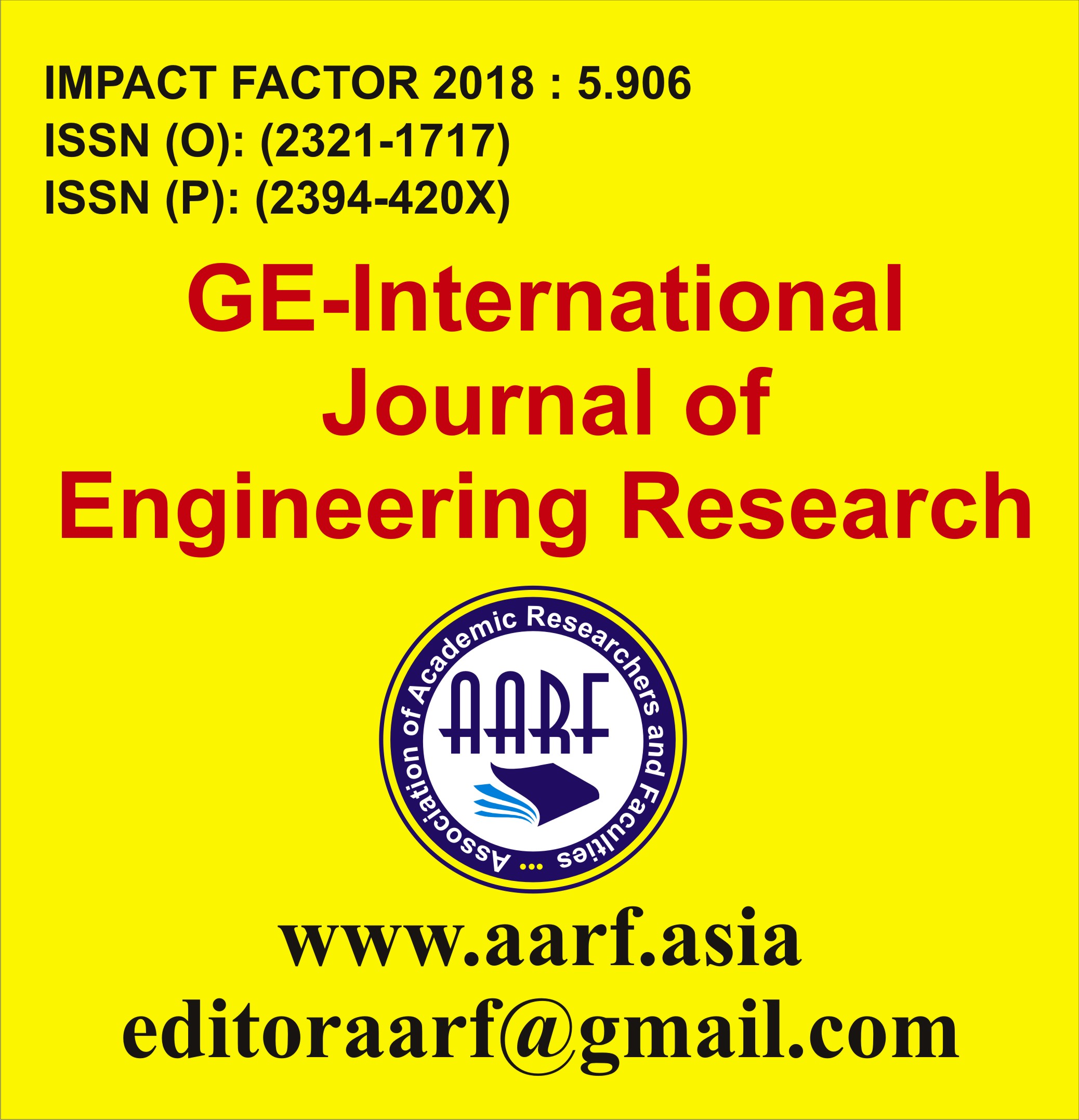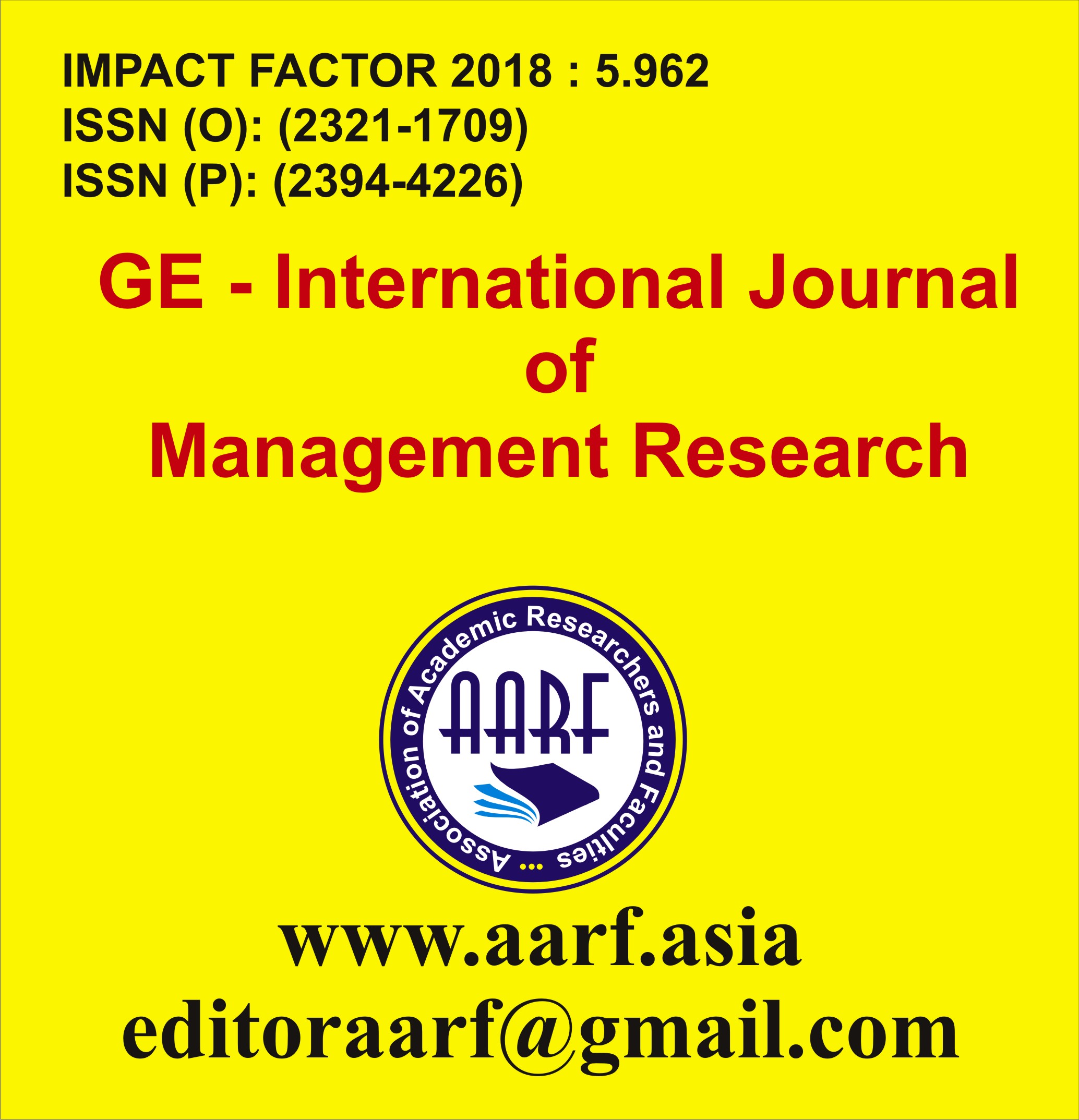
- Current Issue
- Past Issues
- Conference Proceedings
- Submit Manuscript
- Join Our Editorial Team
- Join as a Member

| S.No | Particular | Page No. | |
|---|---|---|---|
| 1 |
Dr. Beena IndraniAbstract: The great poet Tagore is well known as Gurudev. From his childhood itself he had manifested all the signs of great personality. While going deeper and deeper into the life and works of Tagore, the fact that comes vividly to the fore is that the educational philosophy of Tagore was mainly the philosophy of his life itself. In his philosophy there is the sum total of the four fundamental philosophies of naturalism, humanism, internationalism and idealism. His philosophy is a depiction of fulfillment through a harmony with all things. Tagore found that the education of his times is inadequate, he wished that education should facilitate an individual’s all round development and result in the perfection of the individual and society (www.eajournals.org). In this paper an attempt author discussed the educational ideas of Tagore in a general way. |
|
1-10 |
| 2 |
Milanbhai Mahendrabhai ChaudhariAbstract: Creative and imaginative approach of writing classic epics has become a trend as well as need of the times; this is very well indentified by many new upcoming and skilled writers in India. Amish Tripathi is one such author |
|
11-17 |
| 3 |
NAVIKA YADAV1, DR PURAN SINGH2Abstract: As a post-settler nation Australia is as yet struggling with its brutal settler past. In late decades Australia has known an ascent in reconciliation activities supporting the reconciliation development that is keeping Australia in its hold. In the accompanying part the center movements towards the reconciliation procedure in Australia. Initially the reconciliation development in Australia is talked about, advancing reports and request |
|
18-25 |
| 4 |
Dr. Induprakash SinghAbstract: In every novel, Anita Nair always thought about the woman’s search for freedom and self-realization. In Anita Nair’s fictions, her characters have come out of their struggles and quest their self-identity. Women's liberation is an analysis of the overarching social conditions, which have avoided ladies from the predominant male culture, social, political and scholarly interests. Innovation is plainly clear in the development of the new lady composing. She places her protagonists in the social milieu of modern India and portrays them convincingly. |
|
26-29 |
| 5 |
डॉ मनोहर à¤à¥€à¤•à¤¾à¤œà¥€ सिरसातो à¤à¤‚डारकर अजिंकà¥à¤¯ मोहनरावAbstract: या पà¥à¤°à¥‡à¤à¥‡à¤‚टेशनचा उदà¥à¤¦à¥‡à¤¶ गà¥à¤°à¤¾à¤®à¥€à¤£ à¤à¤¾à¤— आणि गà¥à¤°à¤¾à¤®à¥€à¤£ शहरे सà¥à¤¥à¤¾à¤¨à¤¿à¤• वरà¥à¤£ आणि सà¥à¤¥à¤¾à¤¨à¤¾à¤šà¥‡ विघटन होणà¥à¤¯à¤¾à¤®à¤§à¥à¤¯à¥‡ किंवा अनेकदा खेदजनकपणे बजावत असलेलà¥à¤¯à¤¾ à¤à¥‚मिकेची वà¥à¤¯à¤¾à¤–à¥à¤¯à¤¾ करणे हा आहे! या पà¥à¤°à¥‡à¤à¥‡à¤‚टेशनमधà¥à¤¯à¥‡ असलेली निरीकà¥à¤·à¤£à¥‡ अनेक वेगवेगळà¥à¤¯à¤¾ लोकलमधील गà¥à¤°à¤¾à¤®à¥€à¤£ à¤à¤¾à¤—ांचà¥à¤¯à¤¾ बहà¥à¤¤à¤¾à¤‚श पà¥à¤°à¤•à¤¾à¤¤à¤¤à¤¾à¤‚ना ला! या कामाचा मà¥à¤–à¥à¤¯ यà¥à¤•à¥à¤¤à¤¿à¤µà¤¾à¤¦ असा आहे की जिथे जिथे वà¥à¤¯à¤µà¤¹à¤¾à¤°à¥à¤¯ गà¥à¤°à¤¾à¤®à¥€à¤£ वसाहती असà¥à¤¤à¤¿à¤¤à¥à¤µà¤¾à¤¤ आहेत, तिथे सरकार, वà¥à¤¯à¤¾à¤µà¤¸à¤¾à¤¯à¤¿à¤• नियोजक आणि तेथील रहिवाशांनी तà¥à¤¯à¤¾à¤‚ची शकà¥à¤¤à¥€ तातà¥à¤•à¤¾à¤³ जागेवर केंदà¥à¤°à¤¿à¤¤ केली पाहिजे - जर आपण यशसà¥à¤µà¥€ वà¥à¤¹à¤¾à¤¯à¤šà¥‡ असेल तर तà¥à¤¯à¤¾à¤‚नी "सà¥à¤¥à¤¾à¤¨à¤¿à¤•" शबà¥à¤¦à¤¾à¤šà¤¾ अरà¥à¤¥ काढला पाहिजे! "सà¥à¤¥à¤¾à¤¨à¤¿à¤• समà¥à¤¦à¤¾à¤¯" |
|
37-47 |
| 6 |
Dr. Sunita MalikAbstract: Modern man is seeped in materialistic pleasures and desires for more and more. With the capitalist and consumerism tendencies becoming more prevalent in zxthe twentieth century, the materialistic demands and luxuries of life havecreated a spiritual void in him, leading to the modern man being forever dissatisfied. F. Scott Fitzgerald’s The Great Gatsbyrepresents thespiritual void of the protagonist even though he is one of the most successful men according to materialistic standards. Even though the novel was published about a century ago, still its relevance can be seen as men are still after the same materialistic desires without caring for their spiritual needs. |
|
48-53 |
| 7 |
Mobarak HussainAbstract: The time in Islamic history right after the death of the Prophet Muhammad is known as the Rashidun Caliphate (632-661). Muhammad did not build an empire, but he did govern a small religious republic in Medina under his charismatic prophetic leadership. During the Rashidun period, the Islamic government rapidly expanded throughout the Near East under the leadership of Abu Bakr, Umar, Uthman, and Ali, the four caliphs. Significant military, legal, & economic systems, as well as the beginnings of an imperial bureaucracy, were built by them, laying the groundwork for the eventual triumph of the Islamic state. While the Rashidun Caliphate is commonly regarded as a religious-political zenith, it was really the site of heated discussions over issues like the legitimacy of the caliph's position and the proper role of religion in government. It was incredibly difficult to rule a vast empire and maintain religious unity, as evidenced by the fact that the Rashidun Caliphate collapsed into a disastrous civil war that irrevocably split the fledgling Muslim community. Keywords: Islamism, Religious reforms, Islamic caliphate, Ijtihad, Development. |
|
54-62 |
| 8 |
Sanjay Kumar,Abstract: Tribal and Dalit literature’ as the name suggest is literature written by the Dalits about their lives. Dalit is an umbrella term under which comes the term ‘Tribal’. Dalit literature forms an important and distinct part of Indian literature. If the Dalit is the protagonist of India ‘s boycotted society, the African American is the protagonist of Black America. One is robbed and degraded by the White society and the other by Savarna society. One is brought and sold from one’s own home land and the other was called untouchable by birth. |
|
63-69 |
| 9 |
Dr. Badruz Zaman Khan Dr. Ramjan Ali AhmedAbstract: Through this study, an attempt has been made to focus and highlight the life and contribution of Nawab Siddiq Hasan Khan to the development Qur’an literature. Nawab Siddiq Hasan Khan was an Islamic scholar and leader of India's Muslim community in the 19th century, often considered to be the most important Muslim scholar. He is largely credited alongside Sayyid Nazeer Husain with founding the revivalist Ahl-i Hadith movement, which became the dominant strain of Sunni Islam throughout the immediate region. Siddiq Hasan Khan was also a prominent scholarly authority of the Arab Salafiyya movement of the late 19th and early 20th centuries. He was also a major South Asian exponent of the teachings of the classical theologian Ibn Taymiyya Apart from Ibn Taymiyya, Siddiq HÄsăn Khan was also influenced by the scholarly traditions of Al-Shawkani, Shah Wali Allah and Syed AhmedHe contributed a lot to the development of Arabic language as well as to the development of Persian and Urdu literature. |
|
70-75 |
| 10 |
Syed Zehirul IdslamAbstract: There is a history of how the religion, literature and culture of a part of the people of the world influence the other religion and literature. That is why it is necessary to know the historical cause and coordination through which Islam influenced the other parts of the world. The light which appeared penetrating the darkness of the Arab deserts, spread far and wide in the east and the west and illuminated them fully. Due to this a new life and reformation came into light in the three continents of Asia, Africa and Europe. Islam, of course, introduces a sharp revolution through the death also gains a new life. From it the people of far Middle East saw the light of new dawn of pleasure, the darkness of Africa became very far forever and there created a new renaissance among the European people who were in utter darkness. Like that the arrival of Islam also had a hit to the great India, giving it fresh life and thinking. Due to the result of such activities the religious, social, literary, and cultural revolutions appeared before us. In comparison to the other parts of India, Islam and its culture came to Assam very late from the historical point of view. So, except Assam, in the other parts of India, we find vast developments of Islamic culture there. |
|
76-83 |
| 11 |
Eunus Ali Mollah, Dr. Raizuddin AlomAbstract: Yusuf Idris (1927-91), who had a place with a similar age of spearheading Egyptian essayists as Naguib Mahfouz and Tawfiq al-Hakim, is generally celebrated as the father of the Arabic short stories, similarly as Mahfouz is viewed as the father of the Arabic novel. Yusuf Idris concentrated on medication and rehearsed as a specialist, yet even as an understudy his inclinations were in legislative issues and the help of the patriot battle, and recorded as a hard copy and his composition, whether in his customary paper sections or in his fiction, frequently mirrored his political convictions. |
|
84-90 |
| 12 |
डॉ चंदà¥à¤°à¤¶à¥‡à¤–र उपाधà¥à¤¯à¤¾à¤¯Abstract: Paper in Hindi |
|
91-94 |
| 13 |
Dr JyotiAbstract: यह लेख आधुनिक हिंदी साहित्य की सबसे प्रभावशाली शख्सियतों में से एक, चित्रा मुद्गल के जीवन और कार्यों का व्यापक विश्लेषण प्रदान करता है। यह उनकी शैक्षिक पृष्ठभूमि पर प्रकाश डालता है, जिसमें हिंदी साहित्य के एक छात्र से एक प्रसिद्ध लेखक तक की उनकी यात्रा का पता चलता है। यह लेख उनके व्यक्तिगत जीवन पर भी प्रकाश डालता है, जिसमें उनके रिश्ते भी शामिल हैं और उन्होंने उनके लेखन को कैसे प्रभावित किया। लेख का मूल भाग मुद्गल के उल्लेखनीय कार्यों, जैसे "आवान", "पोस्ट बॉक्स नंबर 203 नालासोपारा" और अन्य की गहन जांच के लिए समर्पित है। यह उन विषयों की खोज करता है जिन्हें वह अपने लेखन में संबोधित करती है, जिसमें लिंग, राजनीति और पहचान शामिल है, और वह सामाजिक मुद्दों पर प्रकाश डालने के लिए अपनी कथा का उपयोग कैसे करती है। लेख में उनके कार्यों को मिली आलोचनात्मक प्रशंसा पर भी चर्चा की गई है, जिसमें व्यास सम्मान और साहित्य अकादमी पुरस्कार जैसे प्रतिष्ठित पुरस्कार शामिल हैं। इसके अलावा, लेख हिंदी साहित्य पर मुद्गल के प्रभाव का मूल्यांकन करता है, जिसमें चर्चा की गई है कि उनकी अनूठी कथा शैली और विषयगत फोकस ने समकालीन लेखकों को कैसे प्रभावित किया है। यह एक सामाजिक आलोचक के रूप में उनकी भूमिका पर भी विचार करता है और कैसे उनके लेखन ने विभिन्न सामाजिक मुद्दों पर चर्चा को बढ़ावा दिया है। अंत में, लेख चित्रा मुद्गल को हिंदी साहित्य में एक महत्वपूर्ण व्यक्ति के रूप में प्रस्तुत करता है, जिनके कार्यों ने साहित्यिक परिदृश्य पर एक अमिट छाप छोड़ी है। साहित्य और समाज में बड़े पैमाने पर उनका योगदान उन्हें साहित्यिक जगत में अत्यधिक महत्व का व्यक्ति बनाता है। |
|
95-104 |
| 14 |
SharmilaAbstract: Indian fiction in English has a galaxy of Women novelists starting from Kamala markandaya, a galaxy that includes among others, such widely acclaimed novelists as Nayantara Sahgal, Ruth Prawer Jhabvala, Attia Hosain, Anita Desai and Shashi Deshpande. In the changing scenario of postcolonial In-dian society that observed crosscurrents of traditional ideals and newly imported ones, these women novelists were burdened with the task of giving their women characters the specific roles that would fit in the social-cultural modes and values of the changed society. A new generation of women emerged, embracing the changed values according to which women have a voice of their own, a voice that had been suppressed for centuries. These women, who have the capacity to make free choice and need not therefore depend on the choice of the male, are portrayed in the novels of the new generation women novelists. These new women characters are not however the same everywhere: they react to the particular situation they are in, and their psychic and moral dilemmas are exposed accordingly. \r\n |
|
105-108 |
| 15 |
DR.AMRITA DUTTAAbstract: Women’s Studies in India has evolved significantly since its inception in the late 20th century. Initially emerging from the broader feminist movements, it has sought to explore and address the multifaceted issues faced by women in Indian society. This field has not only aimed at academic inquiry but also at social transformation. Women’s Studies in India has evolved significantly over the past few decades, reflecting the country's complex socio-cultural landscape. This academic field has aimed to analyze and understand the role of women in society, focusing on issues such as gender inequality, patriarchy, and women's rights. |
|
109-112 |
| 16 |
Dr. Bharathi Devi PAbstract: People belonging to various tribes live in India. Many tribes around the country have their own sustainable way of life. In reality, half of these tribes are comprised of women. But in the race for development, they have been uprooted from their traditional way of living. On the one hand, huge companies have been established in their land; on the other hand, development plans without vision have made them helpless. The independent life of tribal women is now at a crossroads. The government's development plans have a limited perspective, and in light of this, the present article has attempted to examine the condition of tribal women in India today. |
|
113-119 |





















